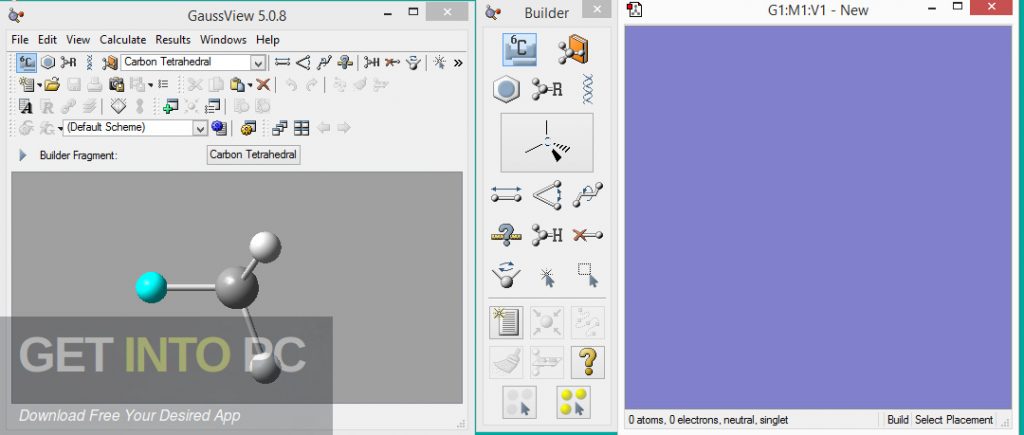

- How to install gaussview 6 on rhel update#
- How to install gaussview 6 on rhel Patch#
- How to install gaussview 6 on rhel full#
- How to install gaussview 6 on rhel portable#
- How to install gaussview 6 on rhel software#
This cookie is set by GDPR Cookie Consent plugin. The cookie is set by GDPR cookie consent to record the user consent for the cookies in the category "Functional". The cookie is used to store the user consent for the cookies in the category "Analytics". These cookies ensure basic functionalities and security features of the website, anonymously. Necessary cookies are absolutely essential for the website to function properly. The VirtualBox Extension pack is use to enable several useful functionalities for a guest operating system or virtual machines such as USB device support, RDP support, and many more. Loaded: loaded (/usr/lib/virtualbox/vboxdrv.sh enabled vendor preset: disabled)Īctive: active (exited) since Thu 21:31:52 UTC 6s ago Installing VirtualBox Extension Pack Step 4 – You can verify VirtualBox installation by checking the status of vboxdrv service, as shown below: $ systemctl status vboxdrv Output:
How to install gaussview 6 on rhel update#
You can install VirtualBox like any other application after update the apt package list as shown below: $ sudo apt update Step 3 – Once the VirtualBox’s Oracle repository gets enabled in your Red Hat system.

Step 2 – Now, downlod the oracle linux repository file to /etc// directory using the wget command, as shown below: $ sudo wget -P /etc/
How to install gaussview 6 on rhel Patch#
$ sudo yum install kernel-devel kernel-devel-$(uname -r) kernel-headers kernel-headers-$(uname -r) make patch gcc Step 1 – In the first step, we need to build tools for compaling vboxdrv kernel module to your Red Hat system by using the following wget command:.andLinux, which we’ve covered in the past, was last updated in 2009. This coLinux-based distribution was last updated in 2011, so it’s a bit old - but other options like andLinux are even more out of date.
How to install gaussview 6 on rhel portable#
If you want to try this out, you may want to try out Portable Ubuntu Remix. coLinux hasn’t released a new version in over two years, so development seems to be either stalled or moving very slowly. coLinux doesn’t yet support 64-bit versions of Windows, so you’ll need to be running a 32-bit version of Windows on your machine to do this - that’s increasingly rare. This is a great idea, but there’s a problem. It’s a way to natively run Linux alongside the Windows kernel in a way that offers much faster performance than simply running Linux in a virtual machine. If you want to run a specific program on Windows, perform a Google search for the name of that program and “Windows” - there’s a good chance you’ll find a version of the program that ‘s been ported to Windows.ĬoLinux stands for Cooperative Linux. If you really miss Emacs, you’ll find versions of Emacs for Windows. Many common Linux programs have already been ported to Windows and compiled versions have been made available online. Performance won’t be quite as good as a normally installed Linux system when it comes to disk read and write times, but it should be faster than a virtual machine. If the partitioning aspects are what’s holding you back, give Wubi a try. This means that you can install Ubuntu and use it without any partitioning and you can uninstall Ubuntu from the Windows Control Panel when you’re done. Instead, it creates a special file on your Windows partition and uses that file as your Ubuntu drive. However, Wubi doesn’t install Ubuntu in the normal way. You’ll have to reboot each time you want to use your Linux system just as if you had installed it in a standard dual-boot configuration.

How to install gaussview 6 on rhel software#
This method is technically installing Linux, not running Linux software on Windows.
How to install gaussview 6 on rhel full#
This solution is ideal for users missing crucial Linux utilities on Windows - it’s not a way to run a full Linux desktop. Just make sure you lock down your SSH server the same way you would on Linux. You can even use Cygwin to install an OpenSSH server and get SSH access to a Windows system.

We’ve previously covered installing and using Cygwin. Cygwin will give you a Linux-like terminal and command-line environment with many of the command-line programs you may already be used to. However, much software has already been recompiled. It’s not a way to run existing Linux software on Windows - the software will have to be recompiled. You could even try using VirtualBox’s seamless mode or VMware’s unity mode to run Linux applications directly on your desktop - they’ll be running in the virtual machine, but their windows will be present on your Windows desktop instead of trapped in a single virtual machine window.Ĭygwin is a collection of tools that offer a Linux-like environment on Windows.


 0 kommentar(er)
0 kommentar(er)
